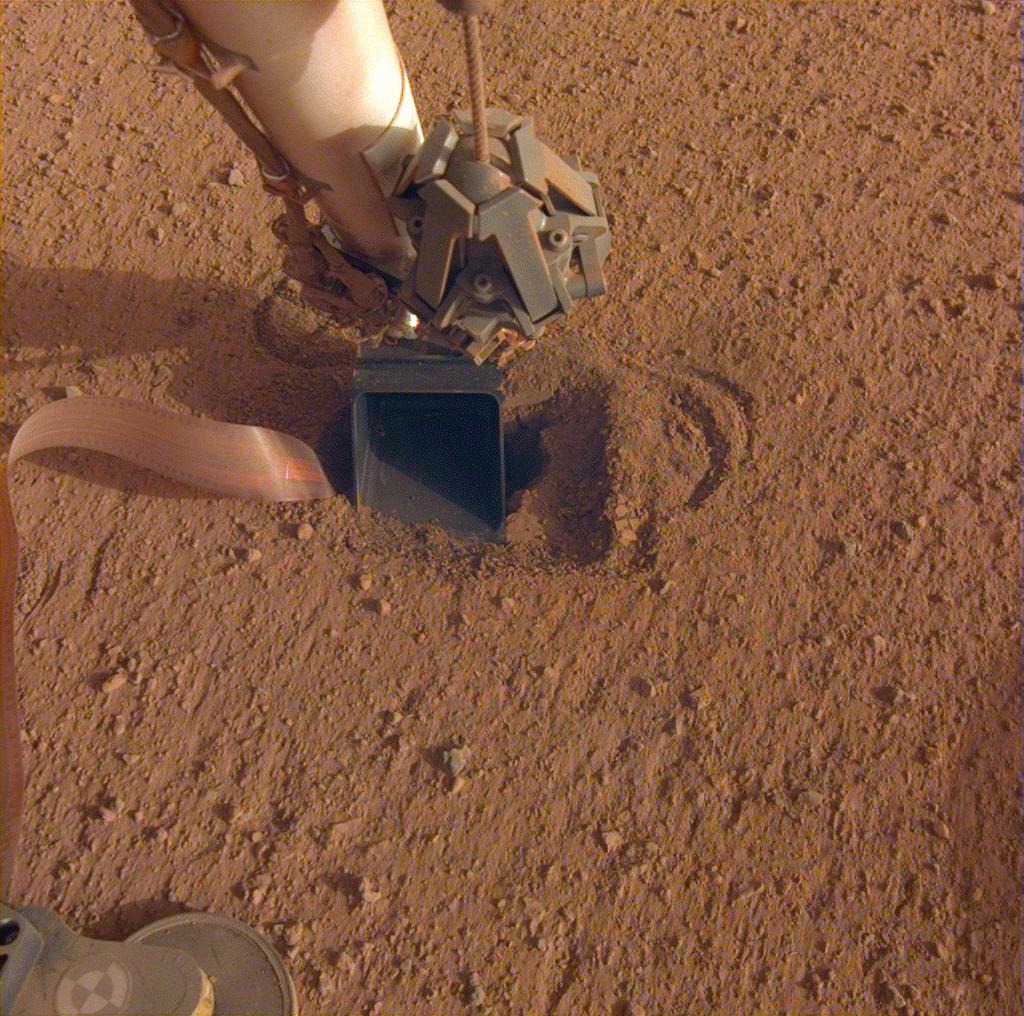
|
NASA InSight’s Mole Taps the Bottom of the Lander’s Scoop
- Click the image above for a larger view
- Full-Res JPEG (1024 x 1016) (228.6 kB)
- Full-Res TIFF (1024 x 1016) (2.9 MB)
Caption:
After the scoop on the end of NASA's Mars InSight lander was used to push down on the top of the spacecraft's "mole," or self-hammering heat probe, it was held in place to essentially block the mole from popping out of the soil. The movement of sand grains in the scoop, seen here, suggested that the mole had began bumping up against the bottom of the scoop while hammering on June 20, 2020.
Background Info:
JPL manages InSight for NASA's Science Mission Directorate. InSight is part of NASA's Discovery Program, managed by the agency's Marshall Space Flight Center in Huntsville, Alabama. Lockheed Martin Space in Denver built the InSight spacecraft, including its cruise stage and lander, and supports spacecraft operations for the mission.
A number of European partners, including France's Centre National d'Études Spatiales (CNES) and the German Aerospace Center (DLR), are supporting the InSight mission. CNES and the Institut de Physique du Globe de Paris (IPGP) provided the Seismic Experiment for Interior Structure ( SEIS ) instrument, with significant contributions from the Max Planck Institute for Solar System Research (MPS) in Germany, the Swiss Institute of Technology (ETH) in Switzerland, Imperial College and Oxford University in the United Kingdom, and JPL. DLR provided the Heat Flow and Physical Properties Package ( HP3 ) instrument, with significant contributions from the Space Research Center (CBK) of the Polish Academy of Sciences and Astronika in Poland. Spain's Centro de Astrobiología (CAB) supplied the wind sensors.
For more information about the mission, go to https://mars.nasa.gov/insight .
Cataloging Keywords:
| Name | Value | Additional Values |
|---|---|---|
| Target | Mars | |
| System | ||
| Target Type | Planet | |
| Mission | InSight | |
| Instrument Host | InSight Lander | |
| Host Type | Lander | |
| Instrument | Heat Flow and Physical Properties Package (HP3) | Seismic Experiment for Interior Structure (SEIS) |
| Detector | ||
| Extra Keywords | Color | |
| Acquisition Date | ||
| Release Date | 2020-07-07 | |
| Date in Caption | 2020-06-20 | |
| Image Credit | NASA/JPL-Caltech | |
| Source | photojournal.jpl.nasa.gov/catalog/PIA23896 | |
| Identifier | PIA23896 | |
